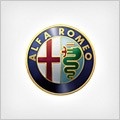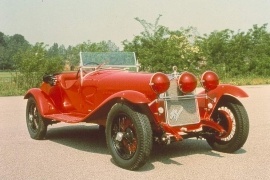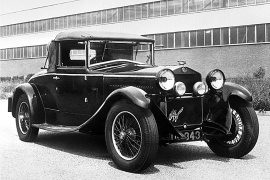
ALFA ROMEO 6C
Generations Timeline, Specs and Pictures

It was the last car launched by Alfa Romeo before WWII.
But the technology involved and the iron will of its makers made possible the re-run of the model after the war ended and it was built in few forms until 1952.
Alfa Romeo was one of the most powerful and sportiest cars before WWII. Its cars won many races and its engineers tried to push the boundaries with advanced techniques, unused by most of its competitors. Most of the 6C vehicles were delivered as chassis, and the customers finished their cars at various coachbuilders such as Pininfarina or Touring Superleggera of Milan.
The construction was based on steel, ladder-frame chassis. There were three different wheelbases, the shortest one being used for the sport and super-sport models. They were fitted with roadster-type bodyworks, so the cars were lighter and more competitive. The Super Sport version featured the shortest chassis, with a 2.75 (108.2”) wheelbase. Its curved bodywork with fluid lines was ahead of its times.
Inside, the most unusual feature of the car was the driver’s seat, which was installed further back than the side-passenger. That was due to the driving post and the fixed steering wheel. The instrument panel used most of the gauges and dials from the racing version. Since it wasn’t fitted with rear seats, it didn’t have rear side windows.
Under the hood, the 6C 2500 featured an inline-six engine. For the Super Sport version only, it was fitted with two Webber carburetors and a higher compression ratio of 8:1 instead of 7:1. That improvement led to a total output of 110 hp. The suspension is independent all round with twin trailing arms on the front while the rear has swinging arms.

The idea of introducing a top-of-the-range supercharged version of the 6C 1750 model was Vittorio Jano’s and it was developed a short while after the initial 1750 car won the Mille Miglia race in 1928.
The new 6C 1750 Grand Sport broke all racing records the following years, clinching easy wins at the Mille Miglia, 24 Hours of Spa or Tourist Trophy. This model was equipped with a 1.8L supercharged engine delivering 85 hp and reaching a top speeds of 144 to 170 km/hm, while also being built out of lightweight components. Less than 360 of Grand Sport/Super Sport units were produced between 1929 and 1932.

Alfa Romeo realized that its RL model was too heavy to win races and developed a new model with a smaller engine, which proved to be successful later on.
The carmaker unveiled the new 6C 1500 at the Milan Motor Show in 1925, but the production started only in 1927, only after the engineers found solutions to make the car more reliable and improved the engine as well. Alfa Romeo developed the car to win races, and that what the 6C did, and claimed first place at the 1928 Mille Miglia and the 24 Hours of Spa.
The first models were bodied by Carozzeria Touring and were true sports cars with a lower chassis. At the front, the carmaker offered an option for two or four headlights, with an additional pair placed between the main headlamps, for night driving. All four were supported by the same beam, mounted between the front fenders. Zagato also built an aluminum bodywork for the 5C 1500, and that led to several modifications to the original project. The road version featured two spare wheels mounted at the back of the car, on the raked forward trunk lid.
Since it was a sports car, it featured just two doors and two seats inside, with a removable passenger’s seat or a bench. Its instrument panel took center stage on the dashboard with bigger dials for the speedometer and tachometer.
Under the hood, Alfa Romeo installed a 1.5-liter, inline-six engine. Later on, it developed a dual overhead camshaft system, increasing the power output from 44 hp up to 84 hp with a supercharger. The four-speed manual gearbox sent the power to the rear wheels.























































